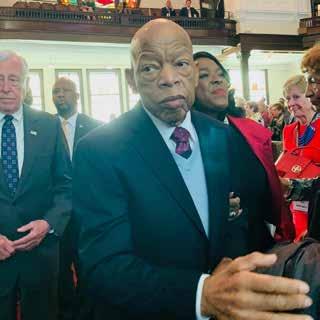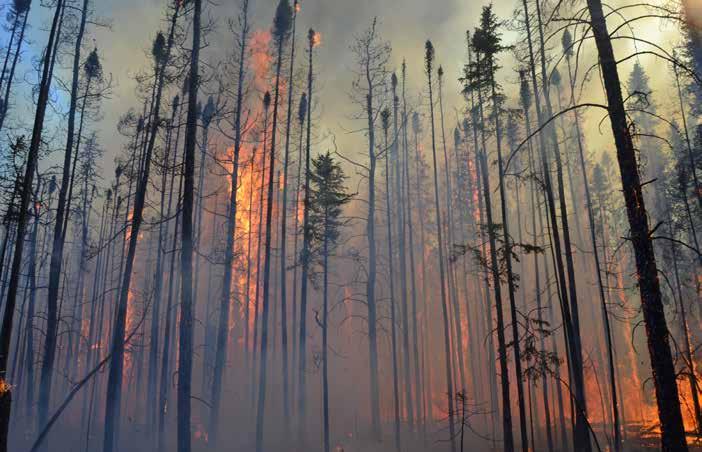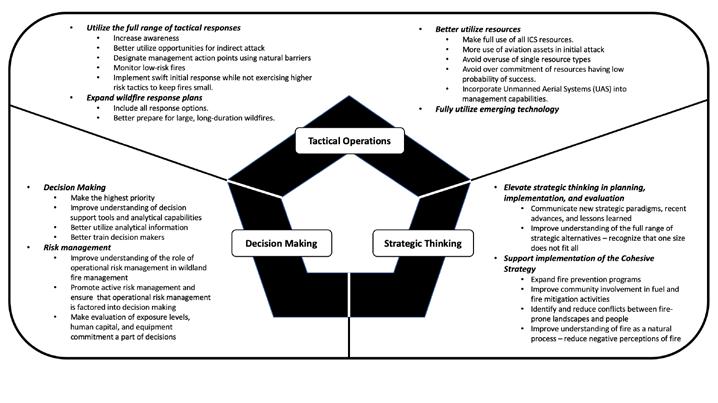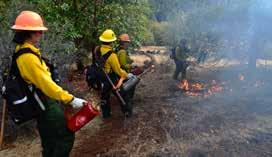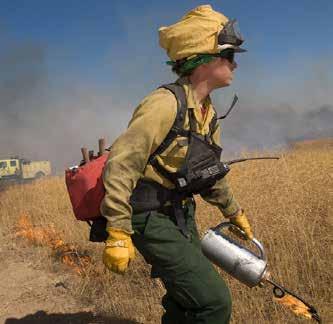
2 minute read
BRIEFING Pandemic spreads, balloons fall, fires burn — from chaos we build order
flood, a hurricane — can be isolated as an “incident” and managed with specific actions adapted over time. But a pandemic or climate crisis can only be managed with community, state and global responses. First responders, wildland fire managers and technical and scientific experts are committed to respond to incidents, but in 2020 we do our work amid a societal-scale triage, responding amid the pandemonium of global stressors from COVID-19 and climate change. While we’re assigning a crew to build fireline or drag a drip-torch, we’re also recruiting everyone to work the COVID fireline by, at a minimum, wearing our masks and urging others to join us. Which is why it’s so important, in this issue of Wildfire, that we ask — how can we change our systems? As Mike DeGrosky observes: “Damn, but I love [John] Lewis’s idea of ‘good trouble!’ Leadership requires risk. Leadership requires courage. Sometimes leadership requires a willingness to get in good trouble.”
SOME OF WHAT I EXPERIENCED in the balloon response echoed what I’ve learned about ourselves and our profession while editing a decade of Wildfire. Should the unplanned event occur — a balloon (or three) falling during our shift, or a seismic social deflation, the pandemic “spreading like wildfire” — we will respond, both in the field and as leaders in our profession and communities. And on our shifts this year (and into the future) we must work to sustain the lands we’re responsible for, and the colleagues and communities we work with. Yet we live in a world beyond firelines and controlled burns — so we also must bust our tails to limit viral infections amid the pandemic; we must support an urgent struggle for equity and justice for all; we must find a safe escape route and know our safety zones for our crew from our current economic and political turmoil — and we must find ways to face the epoch-defining climate crisis as we work our day (and night) shifts, managing wildland fire. These are giant challenges, but I sense, I hope — and I’ve learned from a thousand and more pages of your ideas in Wildfire — that we will build from and share our profession’s strengths to help make our days better, and safer. We must do our best each day. We will wake up, make our beds (or pack our sleeping bags, if we’re on assignment), and put on our personal protective equipment — with some new PPE this year, a mask (or a thick bandana, already familiar fireline wear). And when we get close enough to the flames we can check our COVID safety zone — a fire swatter’s length of social distance — and take off our masks, swing a tool or light a burn, and be home again in our good work, with a foot in the black as we share a smile with the sisterhood and brotherhood, our wildland fire family. - RS
Advertisement
GIS Analysis & Mapping
Fully virtual to serve fire agencies in Canada, U.S. & Australia
www.terrasolis.ca
cartography & design fire operations maps web maps, apps, dashboards collector & survey123 fast, efficient and accurate
Visit us today (online, because #SocialDistancing) for more information. 2020 is a hot mess. Your fire mapping doesn’t have to be.


